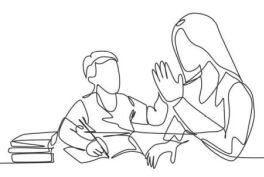Studies have shown that dyslexia is caused by a difference in brain wiring that creates difficulty with language processing. Its effects can range from mild to moderate to profound. A person with dyslexia may have some or many of the warning signs. These problems seem unexpected, when compared to the person’s obvious intelligence and abilities in other areas.
Here is a list of common dyslexia warning signs at different stages of life. If a child has 3 or more of the following warning signs, I encourage that child’s parents and teachers to learn more about dyslexia.
In Preschool:
- Delayed speech
- Mixing up the sounds and the syllables in long words
- Chronic ear infections
- Severe reactions to childhood illnesses
- Constant confusion of left versus right
- Late establishing a dominant hand
- Difficulty learning to tie shoes
- Trouble memorizing their address, phone number, or the alphabet
- Can’t create words that rhyme
- A close relative with dyslexia
In Elementary School:
- Dysgraphia (slow, non-automatic handwriting that is difficult to read)
- Letter or number reversals continuing past the end of first grade
- Extreme difficulty learning cursive
- Slow, choppy, inaccurate reading (guesses based on shape or context; skips or misreads prepositions like at, to, or of; ignores suffixes; can’t sound out unknown words)
- Terrible spelling
- Often can’t remember sight words (they, were, does)
- Often can’t remember homonyms (their, they’re, and there)
- Difficulty telling time with a clock with hands
- Trouble with math (memorizing multiplication tables, memorizing sequences of steps, directionality)
- When speaking, difficulty finding the correct words (lots of ‘whatyamacallits’ and ‘thingies’; common sayings come out slightly twisted)
- Extremely messy bedroom, backpack, and desk
- Dreads going to school (complains of stomach aches or headaches; may have nightmares about school)
In High School:
All of the above symptoms plus:
- Limited vocabulary
- Extremely poor written expression (large discrepancy between verbal skills and written compositions)
- Unable to master a foreign language
- Difficulty reading printed music
- Poor grades in many classes
- May drop out of high school
In Adults:
Education history similar to the above, plus:
- Slow reader
- May have to read a page 2 or 3 times to understand it
- Terrible speller
- Difficulty putting thoughts onto paper (dreads writing memos or letters)
- Still has difficulty with right versus left
- Often gets lost, even in a familiar city
- Sometimes confuses b and d, especially when tired or sick
Reprinted with prior written permission from Susan M. Barton, Founder, Bright Solutions for Dyslexia.
If you are looking for a formal definition, here it is:
“Dyslexia is characterized by difficulties with accurate and / or fluent word recognition and by poor spelling and decoding abilities. These difficulties typically result from a deficit in the phonological component of language that is often unexpected in relation to other cognitive abilities and the provision of effective classroom instruction. Secondary consequences may include problems in reading comprehension and reduced reading experience that can impede growth of vocabulary and background knowledge.”
Adopted by the IDA Board of Directors, Nov. 12, 2002. This Definition is also used by the National Institute of Child Health and Human Development (NICHD).
THE DYSLEXIC LEARNING STYLE
The unique brain wiring of a person with dyslexia also gives them a unique learning style. Frequently, traditional education methods are not effective, which leaves many dyslexics feeling like failures in school. But there is good news! This learning style has been extensively studied, and through research, the most effective teaching methods have been discovered. These methods are the foundation of Barton Reading & Spelling.
Using the Barton system, I offer one-on-one specialized tutoring that teaches reading and spelling using methods tailor-made for the dyslexic learning style.
Learn more about the Barton program.

